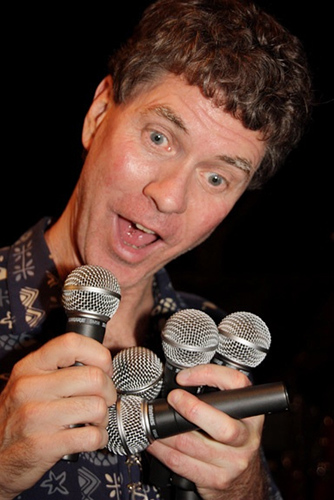
He states that the KSM9’s vocal quality is very natural when a singer is off-axis. At one point in the show, all three singers will use the same mic for harmonies, with Conley applying a bit more compression to make sure that all voices pop out, and he also rides the gain a bit as the singers move.
Mikail Graham, house sound engineer at The Center for the Arts in Grass Valley, CA, may mix two or three acts a week. He says that many performers who do not carry their own vocal mics still insist on an SM58, even when he offers a top-notch condenser. His take is that they’re just not comfortable trying something new in front of a live audience.
Backing Vocals
Depending on the band and the tune, backing vocals can be occasional harmony behind the lead, continual harmony as the signature of the band’s music, or virtually co-lead vocals.
In the early 1990s while working a Kathy Mattea tour, Conley told me how he used a slightly greater amount of reverb and delay and pulled out a bit of the vocal fundamentals to place the backing vocals more in the background, effectively creating a vocal “wash” of harmony behind her voice.
For other tours, however, she would have five or six people singing at the same time, with very different voice characteristics and ranges – some more resonant, and some thinner.
In those cases, he would try to match the mic choice with the particular voice quality, and have the backing vocals mixed more present.
When Malgieri works with acts that include backing vocals, he prefers to have all of them “use the same capsule” so that the audio input to the console is consistent. He will typically process all of the mics the same, including high-pass, de-esser, and similar EQ.
Often in his experience, backing vocalists will at random sing a lead line or do a call and response with the lead vocalist, so their voices must be consistent with the rest of the mix.
To leave space for the lead vocal, as well as to spread out backing vocalists singing unison notes that may not be precisely in tune with each other, he slightly pans their mics alternately left and right. When a line of vocalists are standing next to each other and a mic can possibly pick up more than one person, he will make a harder pan.
When a singers are comfortable with the sound and “feel” of the mic, their focus can be on the performance. I recall veteran monitor engineer Rocky Holman telling me that Steve Perry of Journey knew his particular microphone, and insisted that nothing else took its place.
For many years, Venezuelan jazz vocalist Maria Rivas has used her NDYM-757B mic whenever she tours. Though he could choose anything, Mick Jagger still appears to use an SM58 – albeit on a touring quality wireless transmitter.
For a vocalist, the microphone (and the processing that follows) is their instrument. The role of the engineer is to help each particular voice and style sound its best, as well as to partner and guide artists on mic choices that enhance their performance while making them as comfortable as possible.
Gary Parks has worked in pro audio for more than 25 years, including serving as marketing manager and wireless product manager for Clear-Com, handling RF planning software sales with EDX Wireless, and managing loudspeaker and wireless product management at Electro-Voice.

